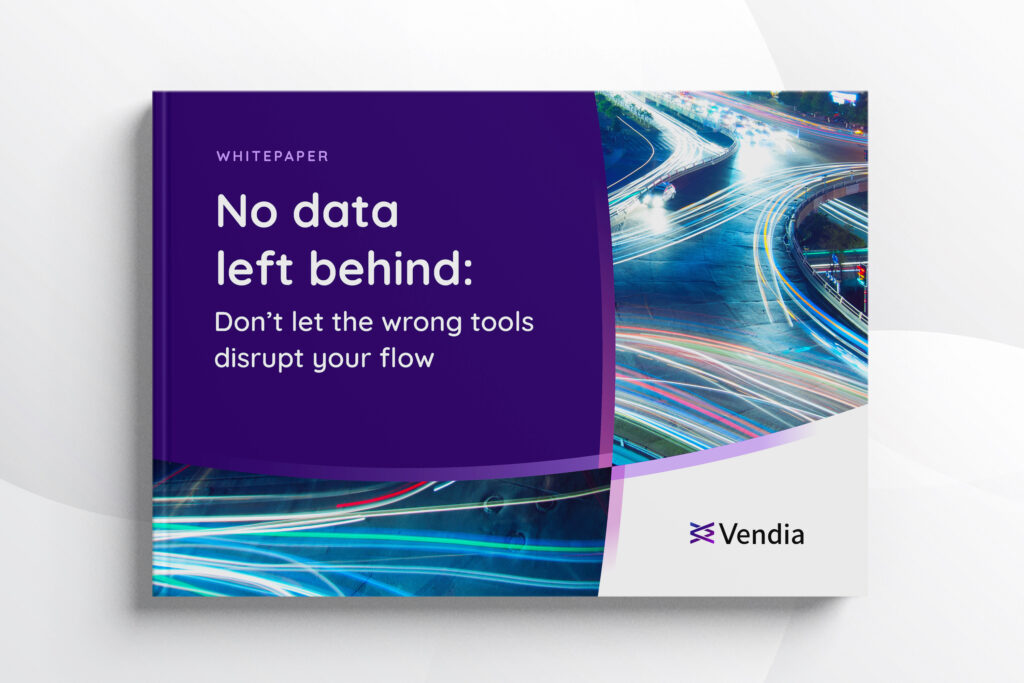This article was originally published on LinkedIn Pulse.
Despite advancements in data management technologies in recent years, the ability to get true potential of business data continues to evolve. From cumbersome batch processing to complex data formatting and transformations, sharing data across diverse systems and tech stacks is anything but easy or in real time.
This is one (of many!) reasons why we’re starting to see event-driven data automation tools revolutionize how businesses leverage data, especially when it comes to collaborating with strategic business partners and other external parties.
This article investigates common hurdles associated with traditional data sharing, highlighting the benefits of event-driven data automation for multi-party data exchange.
Data-sharing bottlenecks: Time to clear the path
Today’s data-driven economy demands agile data sharing, and relying solely on internal data is no longer sufficient. But while third-party data is essential for personalized experiences, fraud prevention, and lots more, current data-sharing mechanisms often fall short when it comes to exchanging information across diverse systems.
Historically, data exchange is primarily conducted through two methods:
- Network data loads: Meticulously formatted data (e.g., CSV files) is transferred in batches between different systems. However, this static approach limits data updates to daily cycles at most, leading to information delays and stale business insights.
- Online data platforms: While online platforms like CDPs, data lakes, and warehouses offer some potential for data sharing, the reality is that incompatible data stacks frequently create obstacles, requiring significant data formatting and transformation efforts.
Both methods present additional challenges as well. Batch processing is inflexible, making it difficult to accommodate real-time operational or market fluctuations. Transferring large datasets also carries significant security risks, potentially exposing sensitive information. Plus, incompatibility between data stacks can create silos across systems and companies, blocking business leaders from gaining a clear, comprehensive view of information for decision making.
These limitations translate to a host of real-world business challenges, such as:
- Downstream disruption: Batch processing in industries such as financial services often leads to delays and lost opportunities. For example, payroll deposits arriving outside designated processing windows can disrupt downstream systems, causing customer frustration and potential financial hardship.
- Increased operational costs: The complexities of data transformation and heightened security measures associated with traditional methods drive up costs. In manufacturing and retail, a lack of real-time data visibility exacerbates issues like inventory mismatches, inaccurate demand forecasts, and reactive replenishment strategies, all of which inflate operational expenses.
- Poor customer experiences: Customers also face friction when businesses lack real-time data. For example, if a global airline doesn’t have access to up-to-date information, its customers may face limited flight or seating options or missed opportunities on using their miles for upgrades.
- Heightened fraud risk: Across industries, delayed detection of fraudulent activities due to batch processing can also increase an organization’s exposure to financial losses.
A new paradigm: Secure, event-driven data sharing
Event-driven data automation is revolutionizing how businesses harness the power of data. End-to-end data automation platforms like Vendia act as a secure intermediary between mixed tech stacks (often with different database solutions), unlocking real-time data sharing.
This means that organizations can instantly analyze data, uncovering previously hidden opportunities and driving proactive strategies faster.
Here’s how it breaks the mold:
- Event-driven architecture: Data is immediately shared any time a predefined event occurs, eliminating the need for batch processing and ensuring information across business systems is always up-to-date.
- Secure direct data transfer: Data moves directly between parties through secure connections, minimizing the attack surface and reducing the risk of exposure during transit.
- Real-time business logic: Business rules within the platform determine what data is shared, where it goes, and when, providing granular control over the flow of data.
This modern approach to data sharing delivers substantial advantages:
- Enhanced data security: Secure data transfer minimizes the risk of breaches and unauthorized or leaky data access.
- Continuous access to up-to-date information: Real-time data sharing ensures all parties have the latest insights, driving better decision-making. For example, sharing real-time arrival data across airlines can help optimize flight connections and reduce passenger wait times.
- Increased agility: Real-time data empowers businesses to respond swiftly to changing market conditions. For instance, manufacturers and retailers can optimize inventory levels and prevent stock outs by sharing real-time inventory data across the supply chain.
- Greater flexibility: Event-driven architecture accommodates various data formats, allowing organizations to share a broader range of data for analysis and operational purposes.
Data pipelines: The foundation, not the fortress
That said, successfully implementing these platforms goes well beyond establishing data pipelines—it demands a strategic business shift. Here, business leaders should focus on events that drive value for the business, as well as the specific outcomes desired by strategic partners.
For example, if two companies need to share information about shipping and each one needs real-time information in their databases, a solution like Vendia allows both systems to be fully up-to-date, and to the extent that each business needs to take action on the data relevant to next steps, they are able to do so.
Embracing real-time data exchange also requires tools that adapt seamlessly to any new or existing technology landscape. In other words, not only should it integrate with existing data stacks, but adopting a new cloud platform or data lake down the road shouldn’t require a massive migration to maintain existing data-sharing practices.


